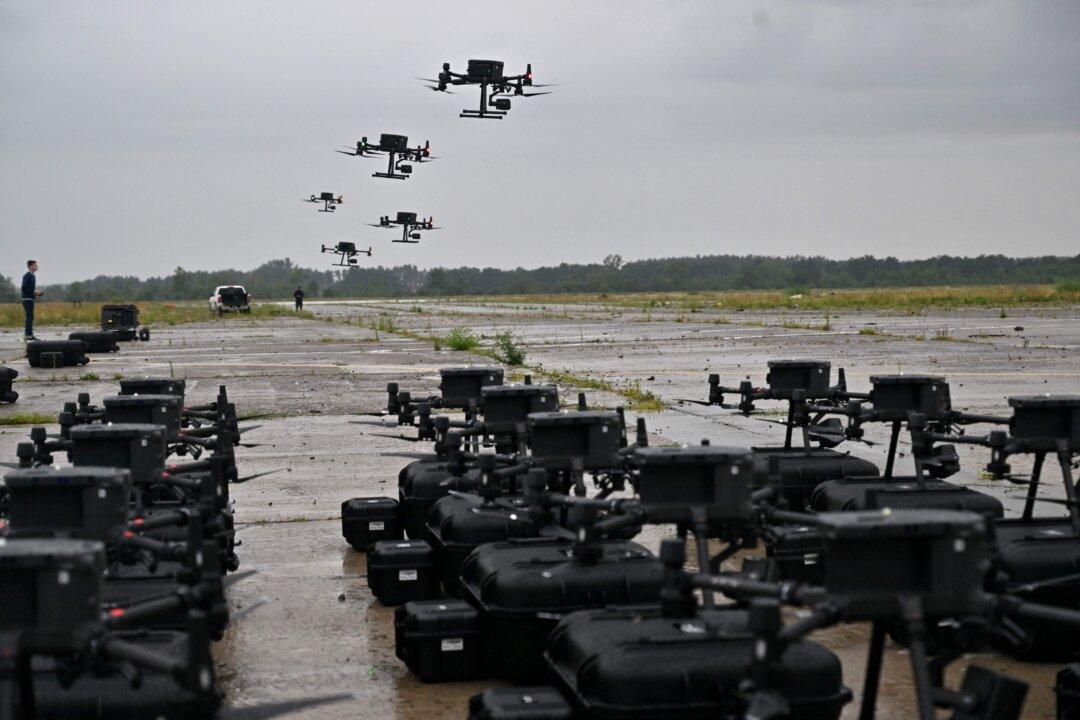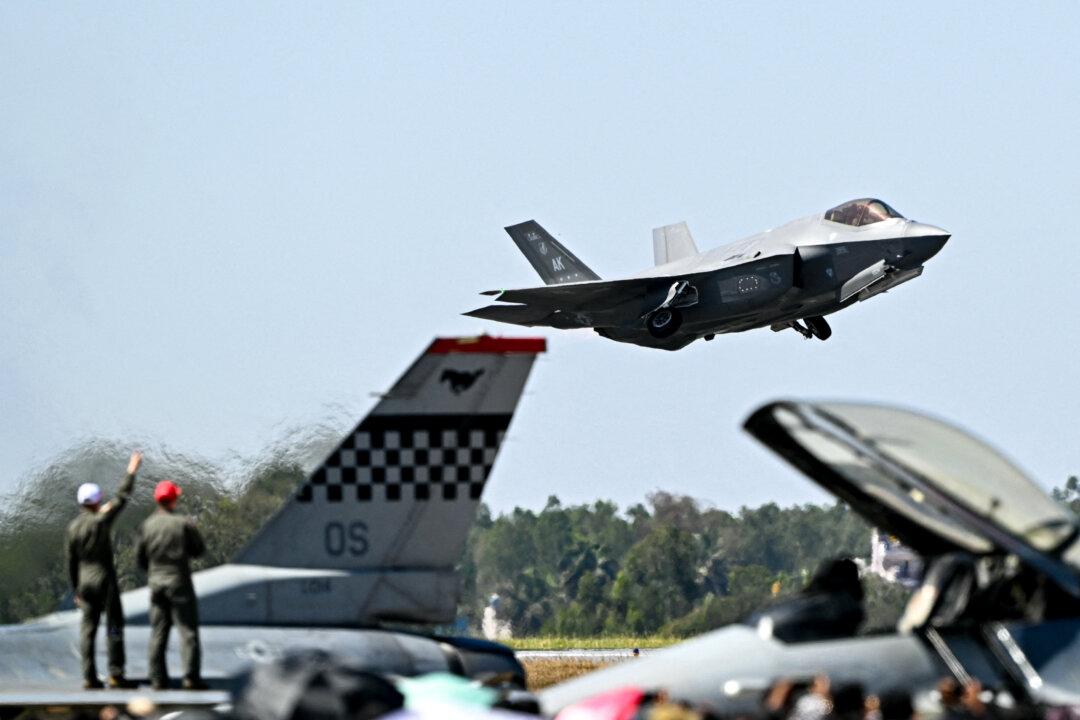Commentary
Putting geopolitics aside for the moment, the Russia–Ukraine war has been a testing ground for some of the West’s most sophisticated weapons and has yielded some interesting insights into modern warfare.
Ukraine’s U.S.-trained army, flush with tens of thousands of Western-provided anti-tank guided missiles and other advanced NATO weapons, had great initial success in foiling Russia’s plan to take Kyiv in 10 days. And not only did Russia fail to take Kyiv, but Ukraine also launched a successful counterattack that set Russia’s badly outnumbered initial invasion force back on its heels, forcing Russia to retreat back into the Donbas region of which it currently controls some 80 percent.
However, even as Russia is activating and training hundreds of thousands more troops, it has used and continues to use cheap Iranian-built Shahed-131 and Shahed-136 drones to successfully strike hundreds of infrastructure targets and military targets throughout Ukraine. These drones are inexpensive, $20,000 or less, with the larger of the two thought to have a range greater than 1,000 miles. Of course, not all Russian drones have been successful in striking their targets, with many getting shot down by Ukrainian air defenses.
A report by the Guardian analyzing the use of the Shahed-136s estimates it cost Ukraine $28.14 million to shoot down 161 Shahed-136s. The high cost of shooting down drones comes from the fact that many of the weapons being used to shoot down drones are far more expensive than the drones themselves. For example, a single S-300 missile costs approximately $1 million, a single National Advanced Surface-to-Air Missile System (NASAMS) anti-air missile costs $1.2 million, and a single Patriot air defense missile costs between $3 million and $4 million.
For Russia, the Shahed and other inexpensive drones have become their remote weapon of choice, their low-cost allowing Russia to launch many at each target knowing that a few will get through. As an added bonus for Russia, each Shahed shot down by a vastly more expensive S-300 or NASAMS anti-air missile depletes Ukraine’s stock of anti-air missiles capable of shooting down Russia’s far more expensive/destructive drones, missiles, and planes. Thus, as is the case with IEDs, we have inexpensive weapons requiring very expensive countermeasures—a classic case of using asymmetric technology and tactics to wear down an opponent.
Of course, Ukraine has been making extensive use of the drones itself, including shorter-ranged Switchblade drones provided by the United States. Though these so-called “kamikaze” drones are much smaller than the Shaheds and carry smaller explosive payloads, the SB300 variants have proven highly effective against personnel and light vehicles. The SB600 model is much larger, delivering the same tank-killing warhead as the $170,000 Javelin missile. The two models have controllable ranges of 6.2 and 25 miles, respectively, but also have the ability to loiter for additional minutes within their controllable range, allowing them to be used more opportunistically. The cost for the SB300 is estimated at $6,000, and though no prices has been published, the SB600’s unit cost likely eclipses that of the Shahed.
While Ukraine hasn’t had access to the large numbers of long-range drones that Russia has, Ukraine recently used cheap long-range drones to strike oil depots in Crimea. And Ukraine is now working with more than 80 Ukraine-based drone manufacturers to develop a wide variety of drones, including longer-range drones like the Shahed. And Ukraine is continuing to buy thousands of cheaper general-purpose drones such as the Chinese-made DJI Mavic that costs less the $2,000. Hence, it’s clear that both Russia and Ukraine are highly incentivized to figure out how to defend against relatively cheap drones without having to expend million-dollar air defense missiles to do so. And there’s little doubt that in the wake of the successful widespread use of drones in the Ukraine–Russia war, the rest of the world’s militaries will also be giving a higher priority to anti-drone technology.
Clearly, using expensive anti-air missiles to protect against masses of cheap drones isn’t sustainable by either side. But until more cost-effective anti-drone measures are developed, the asymmetric nature of cheap drones and expensive anti-air missiles will continue to be a key aspect of drone warfare as is the case with IEDs.
Views expressed in this article are opinions of the author and do not necessarily reflect the views of The Epoch Times.





